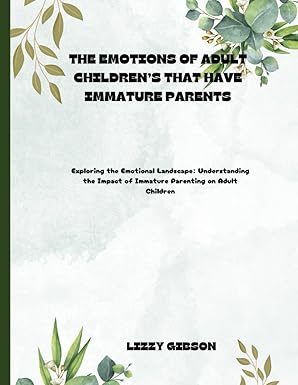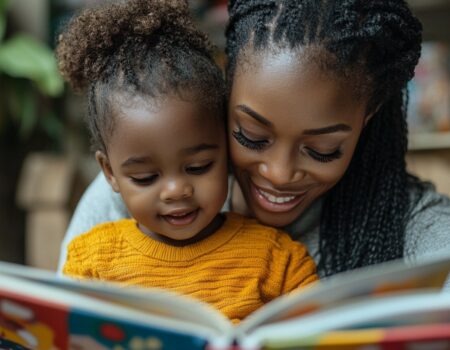Mother’s Emotions profoundly influence the mother-child relationship, a fundamental bond that shapes a child’s development from the earliest moments of life. Far beyond physical needs, this interaction is deeply emotional. A crucial question then arises: to what extent is a child, particularly during their first six years, sensitive and receptive to their mother’s emotions? Early childhood is a period of rapid and intense development, where the foundations of personality, social skills, and emotional regulation are built. Understanding how maternal emotions influence this process is essential for parents, educators, and infant health professionals. This article aims to explore this early emotional connection in detail, drawing on current research and key concepts in child development.
The Baby, an Emotional Sponge: Early Sensitivity to Maternal Emotions (0-18 months)
From birth, and even in utero, a baby is far from being a passive being emotionally. Research in affective neuroscience has shown that infants are equipped with sophisticated mechanisms to detect and respond to the emotional cues of their environment, and particularly those of their primary attachment FIGURE, which is often the mother.
- Emotional contagion: During the first few months, the baby is particularly sensitive to the mother’s emotional state through a process called emotional contagion. They tend to unconsciously imitate their mother’s facial expressions, tone of voice, and body language, which can induce a similar emotional state in them. For example, a baby whose mother is stressed or anxious may become more irritable, cry more often, and have difficulty calming down. Conversely, a calm and joyful mother promotes a state of well-being in her infant.
- Non-verbal communication: Communication between mother and baby is primarily non-verbal. The gaze, touch, caresses, facial expressions, and maternal vocalizations transmit a wealth of emotional information. The baby learns to interpret these signals to understand their environment and their mother’s emotions. An attentive and responsive mother to her baby’s cues establishes secure emotional communication.
- The impact of prenatal and postnatal maternal stress: Stress experienced by the mother during pregnancy can influence the development of the fetal nervous system and the baby’s emotional reactivity. After birth, chronic maternal stress can disrupt the quality of mother-child interactions, affecting the baby’s emotional regulation and increasing their risk of developing anxiety or behavioral problems later in life.
The Emergence of Empathy and Emotional Synchronization (18 months – 3 years)
With cognitive and social development, the child begins to move beyond simple emotional contagion and develops a primitive form of empathy.
- Recognition and imitation of emotions: Towards the end of their second year, the child becomes able to recognize certain basic emotions in others, particularly through facial expressions. They also begin to imitate these expressions, which is an important step in the development of empathy. They may thus show sadness in the face of another child’s distress or smile in response to their mother’s joy.
- Emotional synchronization: The mother-child interaction becomes a more complex emotional dance, characterized by emotional synchronization. This is a process of mutual adjustment where the emotions of the mother and the child influence each other reciprocally, creating a state of emotional harmony. A sensitive and responsive mother helps her child regulate their own emotions by offering support tailored to their needs.
- The role of secure attachment: Secure attachment, based on the mother’s sensitivity and availability, promotes the development of good emotional regulation in the child. A child who feels securely attached is more able to explore their emotions and express them appropriately.

The Intensification of Emotional Understanding and Maternal Influence (3-6 years)
During the preschool period, the child refines their understanding of emotions, and the influence of maternal emotions remains significant, although more nuanced.
- Understanding the causes and consequences of emotions: The child begins to understand that emotions are often linked to specific events and that they can have consequences on behavior. They become more aware of complex emotions such as pride, shame, or guilt.
- The internalization of maternal emotional models: The child attentively observes how their mother expresses, manages, and talks about her own emotions. They internalize these models, which will influence their own way of experiencing and expressing their emotions. A mother who communicates her emotions openly and healthily teaches her child to do the same.
- Emotional co-regulation: The mother continues to play an essential role in the emotional co-regulation of her child. She helps them identify, name, and understand their emotions, and offers them strategies to manage them constructively. For example, when faced with their child’s frustration, a mother can validate their feeling, help them identify the cause of their frustration, and suggest solutions.
Conclusion: An Indissociable Emotional Bond
It is undeniable that a child, from birth to the age of six, deeply feels their mother’s emotions. This early sensitivity, which evolves from simple emotional contagion to a more sophisticated understanding, is an essential driver of their emotional and social development. The mother’s emotional state, her way of communicating her emotions, and her ability to respond to her child’s emotional needs have a significant impact on the construction of the child’s personality, their ability to regulate their own emotions, and the quality of their future relationships.
Promoting healthy emotional communication, based on sensitivity, empathy, and availability, is therefore crucial for the well-being and harmonious development of the child. Supporting mothers by providing them with the necessary resources and support to manage their own stress and emotions is also a fundamental investment in the emotional health of future generations. Recognizing and valuing this powerful emotional bond between mother and young child is an essential step towards building more balanced and empathetic families and societies.












No Comment! Be the first one.